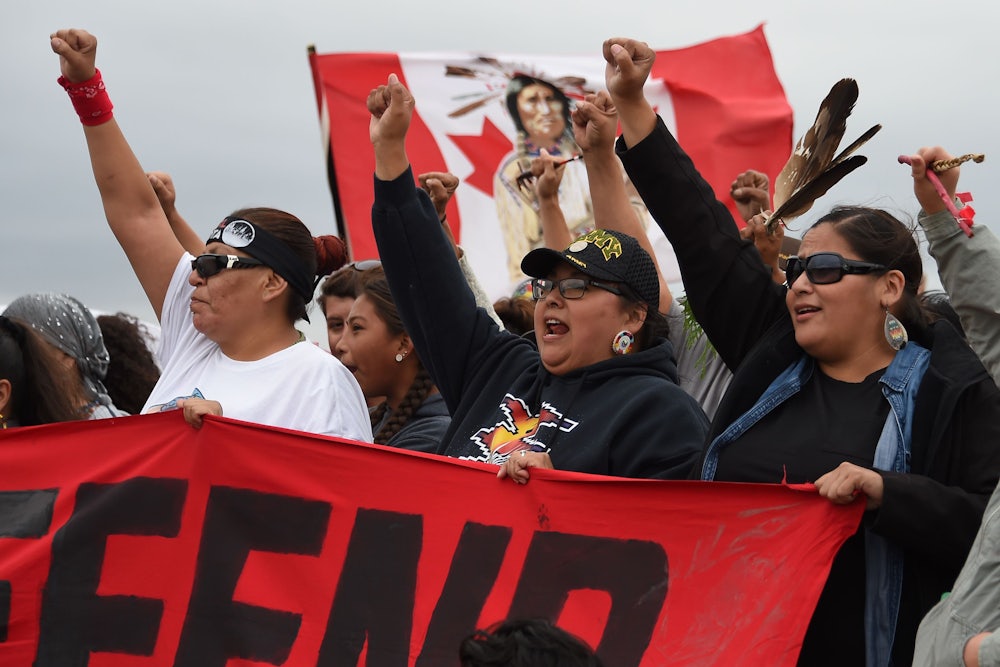After months of protest by Native American tribes, and a particularly volatile weekend in which police used rubber bullets, sound cannons, and pepper spray against protesters and arrested more than 100 people for trespassing, President Barack Obama finally waded into the tensions surrounding the construction of the pipeline. This week, he cautiously offered an update that the government was exploring options to reroute the pipeline, stating, “As a general rule, my view is that there is a way for us to accommodate sacred lands of Native Americans.” He also added that the administration would monitor the situation and allow it to “play out for several more weeks.”
This drew sharp criticism from both North Dakota officials and Native American activists. Cody Schulz, an elected state official, said Obama’s comments “affords the opportunity to the out-of-state militant faction of this protest to keep escalating their violent activities.” Schulz’s comments reflected a visible divide between the state, which declared a state of emergency and called in police reinforcements from seven other states to push back protesters, and the federal government, which had asked Energy Access Partners to “voluntarily pause all construction activity” on and near federal water resources (which the company hasn’t done).
For the Standing Rock Sioux tribe, which has led the efforts against the pipeline in defense of their water supply and sacred sites, Obama’s comments offer hope, but are not enough. David Archambault II, the tribe’s chairman, said that all construction should stop until the Army Corps of Engineers finishes considering alternatives, while others in the tribe expressed concern that letting the standoff “play out” for several more weeks would continue to jeopardize the safety of those protesting the pipeline.
As for the 2016 presidential candidates, the Clinton campaign finally broke its silence and released a brief, non-committal statement about the pipeline last week, stating, “All voices should be heard and all views considered in federal infrastructure projects,” reflecting her divided loyalties between the unions who want the pipeline jobs and the Native American tribes and environmentalists who oppose its construction altogether. Donald Trump, of course, has both invested in and received contributions from Energy Access Partners, and has stayed silent on the issue. All of this points to the likelihood that the standoff will continue into the winter months.
